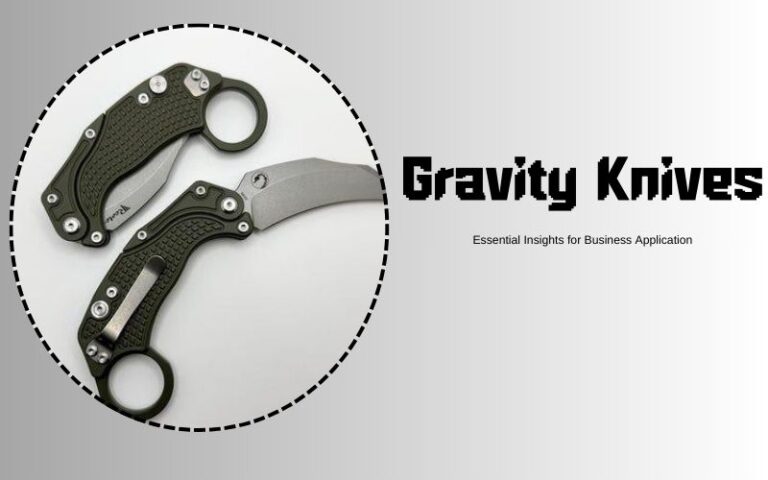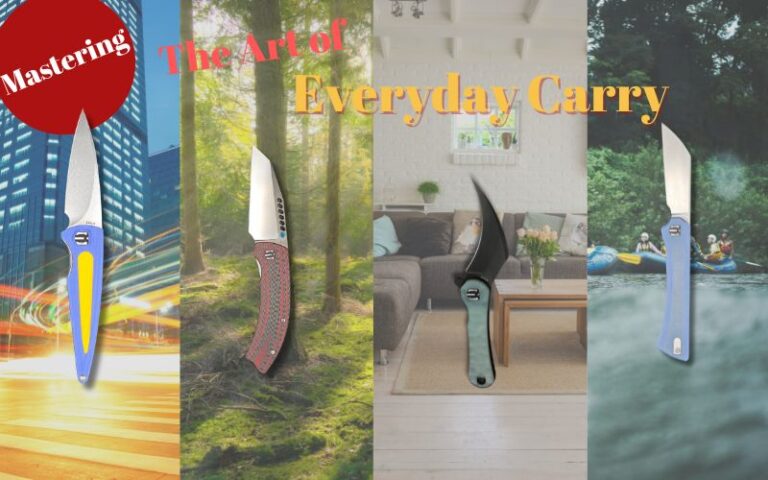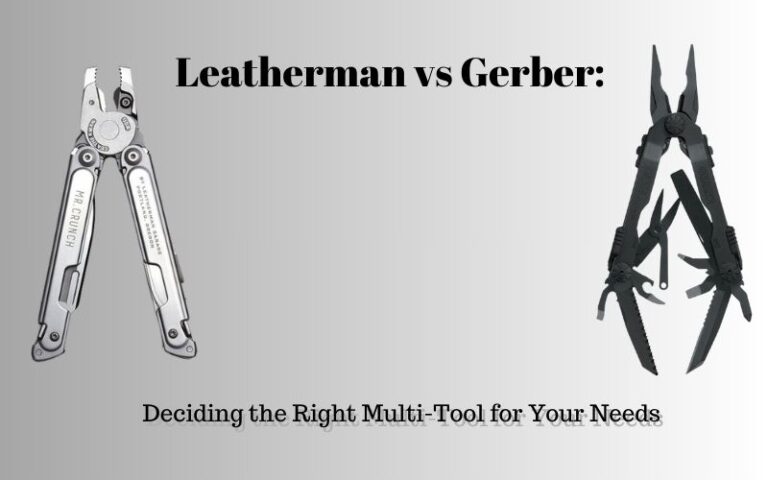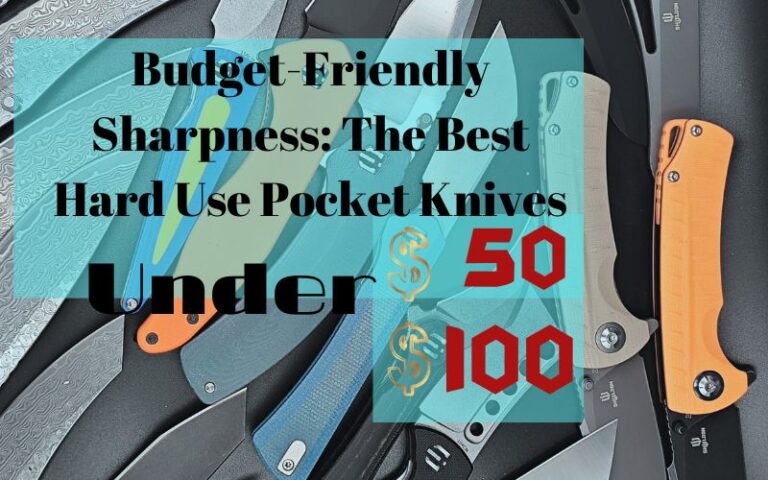
A hunting knife is an important tool for hunters. It is used for skinning and butchering games. As tough as they may seem, hunting knives need to be taken care of regularly if they are to keep doing what they are meant to do.
Going on a hunt or camping vacation with your trusty hunting knife in poor shape will make the trip unbreakable, given the many uses that hunting knives serve.
The maintenance, on the other hand, isn’t all that difficult; you can manage it all on your own.
In this blog post, we will look at a couple of reasons why you should maintain your hunting knives and the many methods for doing so.
So, if you have a wonderful collection of hunting knives that need some TLC, read on to learn how you can get it done swiftly.
Importance of Proper Maintenance for Hunting Knife

Taking good care of your hunting knives is important for a variety of reasons. Here are several reasons why you should clean and oil them every few weeks:
Ensure sharpness
Hunting knife owners should regularly check their hunting knives for sharpness. A dull hunting knife is not just useless but also dangerous. A hunting knife that is not sharp enough can cause you to slip and cut yourself while skinning or butchering an animal.
Every time you use a hunting knife, it loses part of its edge when it cuts into the skin, meat, or when splits wood for kindling. While the dulling effect may not be instantly obvious, regular users of the knife will eventually detect a decline in cutting performance.
Maintaining the blade by sharpening it once every few weeks is essential to preserving its effectiveness.
Prevent rusting
Another reason to keep your hunting knife clean and oiled is to prevent rusting. A hunting knife that is not properly cared for is more likely to develop rust spots, which will not only affect its appearance but also its performance.
If you live in a humid climate or often go hunting in damp conditions, you should check your hunting knives for rust more frequently.
Even if the knife is composed of rust-resistant steel and other high-quality blade materials, you should nevertheless clean and polish the blade.
Aesthetics
Having a clean, polished hunting knife is like icing on the cake; it makes everything about the hunt seem more satisfying. Maintaining your hunting knife will also increase its resale value if you ever decide to sell it.
A hunting knife is an investment and keeping it polished and beautiful will only make it more valuable over time.
Check for faults and damage
Overusing a damaged hunting knife might be dangerous. This is why you must examine your knife before hunting. Maintenance helps discover physical issues such as a loose blade or damaged handle that might cause cuts if handled incorrectly.
In short, maintaining your hunting knife is crucial to keeping it in peak condition and making it last for many years.
Remove discoloration
The discoloration is a frequent flaw that affects most hunting knives. Since hunting knives are used to cut so many things, from plants to animal meat, the blade often develops a unique hue over time.
Consistent maintenance prevents blade discoloration. Furthermore, it increases the hunting knife’s lifespan.
Best Practices to Maintain a Hunting Knife
The following are the best practices for maintaining a hunting knife:
Regularly lubricate your hunting knife
Lubricating a hunting knife involves adding lubricant along moving components, in this example a folding hunting knife with multiple joints and moveable pivots that move when the blade is released.
Lubrication decreases friction and speeds blade action. To prevent a mess, use lubricant sparingly and wipe off excess using tissue paper. Online retailers sell knife lubricants developed for this purpose.
Proper sharpening of hunting knife
Sharpening the hunting knife is vital to its upkeep. A hunting knife can become dull from use, so it’s crucial to maintain a sharp edge.
Hunting knives must be sharp for heavy chores and emergencies. Sharp knives speed up work. They cut animal skin like butter, saving energy. Blunt knives cause headaches.
Even cutting soft items outdoors takes more work. This may cause harm. There are specific tools for sharpening hunting knives; don’t use a rock, which can ruin the blade.
Wash and clean off the hunting knife
After each use, wash and clean off the hunting knife with water. If you’re in the field, wipe it down with a damp cloth and then dry it with a clean towel.
Since most blades are non-rust materials like steel and carbon, you may use as much water as you like. Clean the knife with soap and a soft cloth until you’re happy. Once clean, let it air dry entirely.
Correct Usage

Maintenance includes using the hunting knife as designed. Most hunters misuse their knives.
Kindling needs a larger, stronger knife than a skinning knife. If you want a knife that can handle all jobs, choose a large fixed blade over a pocket knife. Correctly using a knife helps it last for years before you consider replacing it.
Do not handle all the repairs on your own
The design of hunting knives is too complex for DIY projects, and some, such as folding knives, have so many moving components that they will disassemble themselves as soon as you unscrew them.
There are some defects and complexities that you cannot manage on your own, therefore you must take the hunting knife to the local store or knife manufacturer for inspection.
Most specialists have superior machinery and tools that they can utilize to repair and restore your knife’s functionality.
Taking care of the handle

Knife handles are distinctive and should be handled independently from the blade. They are often constructed from a variety of materials, including wood, plastic, metal, and rubber.
Depending on the material, various cleaning procedures are required for each. In conclusion, the handle must always be maintained clean since letting dirt collect is what causes the grip to become loose and slippery whenever it comes into touch with moisture.
Replacements

The prospect of having to replace costly hunting knives might be upsetting at times. Accidents may occur, and your brand-new knife may get damaged during usage.
Instead of purchasing a replacement, you may have the broken component replaced. This might be the blade or the handle of the knife.
You would just need to take it to a professional who can inspect and install it correctly. Again, it should be emphasized that this degree of repairs and replacements should be left to the professionals. Individually tampering with the knife will just make matters worse.
Storage
The last and most crucial aspect of hunting knife care is storage. Foldable knives whose blades can be retracted into the handle nevertheless need to be stored in a protective container that prevents unauthorized access, particularly by children, and keeps them away from moisture.
When not in use, fixed blades may be kept in sheaths and their respective cases.
Storage is what protects the knife from exposure to the elements. If you do not have a knife case, you should locate a towel to wrap the knife in after use and keep it in a cool, dry location until the next hunting trip.
The Bottom Line
Your hunting knife is the most indispensable instrument in your armory. Occasionally, you will need to improvise while you’re out in the world, since it may be unexpected. Possessing a hunting knife with the appropriate adaptability will increase your chances of success on the hunt.
If you are new to hunting and are seeking for the ideal hunting knife for your first outing, you may locate the perfect knife for your requirements by browsing our vast inventory.




